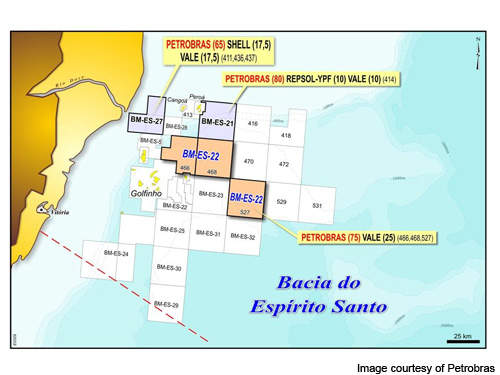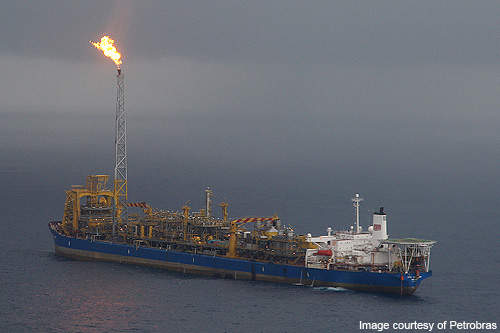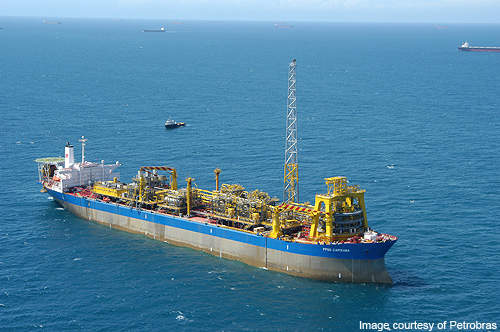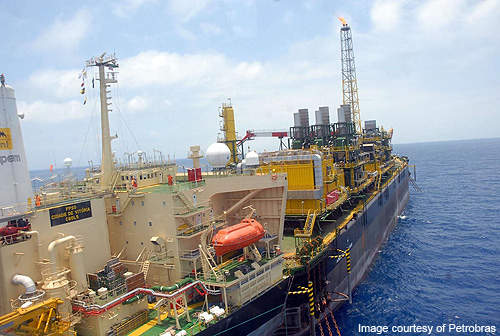The Golfinho field is located in the Espírito Santo basin 60km off the shore of Brazil. The light oil field lies at depths of 1,300m-1,640m and is the first ultra-deepwater project in the Espírito Santo basin.
The field is owned and operated by Brazilian firm Petrobras. Oil was first produced there in May 2006.
Discovery
The field was discovered by the wildcat well, 1-ESS-123, drilled by the Noble Leo Segerius drillship in July 2003. Three exploration wells, drilled between July and December 2003, established the commerciality of the field.
Geology and reserves
The Golfinho field consists of two reservoirs of the Campanian and Maastrichtian age. The reservoirs are separated by normal and transfer faults and are found at depths of 3,000m-5,000m. They consist of conglomerates, diamictites and very coarse-grained sandstones.
Oil is found in a complex structure of amalgamated turbiditic channels. The Campanian reservoir contains 40° API oil and the Maastrichtian reservoir contains 28° API oil. The oil found in the field is of high commercial value as it contains low levels of sulphur and is parafinic.
The field is estimated to contain 450mbbl of oil reserves. It also contains gas in a reservoir of the Santonian age.
Field development
The Golfinho field was developed in three phases. The first (pilot) phase was tested the characteristics of the field and was used to formulate a development plan.
An extended well test (EXT) was conducted during this phase using the FPSO Seillean. The EXT included connecting the 7-GLF-1HA-ESS well to the FPSO. Production from Seillean commenced in February 2006.
The second phase of the field development included the drilling of five producers and three injectors. The Campanian reservoir featured three production and three injection wells. The remaining two producers were drilled in the Maastrichtian reservoir. These wells were tied-back to the FPSO Capixaba. Production from Capixaba commenced in May 2006.
Four production and injection wells were drilled in the Maastrichtian reservoir in the third phase. One well was drilled into the Santonian reservoir to extract gas. These wells were tied-back to the FPSO Cidade de Vitoria. Production from Cidade de Vitoria commenced in November 2007.
FPSO Capixaba
FPSO Capixaba is owned by Single Buoy Moorings (SBM) and was leased by Petrobras under a $560m contract.
The vessel was converted from the 1974-built Stena Congress tanker at the Keppel Shipyard in 2005-2006. Conversion included installation of an internal turret, hull refurbishment, fitting of main deck cranes and marine conversion.
The vessel weighs 273,206dwt, has a length of 337.07m and a breadth of 54.5m. It has a production capacity of 100,000bopd, and a storage capacity of 1.6mmbo. Other features include a helideck that can accommodate a Sikorsky helicopter and a flare tower.
FPSO Capixaba was disconnected from the Golfinho field and moved to the Cachalote field in 2010.
FPSO Cidade de Vitoria
Petrobras signed a $600m agreement with Saipem in 2005 to lease FPSO Cidade de Vitoria for the second phase of the Golfinho field development. The vessel was originally built in 1976 at the IHI shipyard in Kure, Japan. It was converted in 2005-2006 for use at the Golfinho field.
FPSO Cidade de Vitoria is situated at a depth of 1,400m. It has a length of 337m and breadth of 54.5m. The vessel has a dead weight of 273,775mt and features an 18-leg spread mooring system. The FPSO has a production capacity of 100,000bopd and a storage capacity of 1.9mmbo.
The FPSO is fitted with three Solar Titan 130 gas turbogenerators with a capacity of 14MW each. An 11MW Peter Brotherhood steam turbogenerator is also part of the FPSO. The vessel accommodates a crew of 70.
Pipeline
The gas produced at the field is exported onshore through a 68km-long, 12in-diameter pipeline. The gas is sent to a treatment facility in Cacimbas, Brazil, for processing and export to market.
Contracts
Lamprell supplied topside modules for the Capixaba and Cidade de Vitoira.
Subsea 7 was appointed as the EPIC contractor for the gas export pipeline. The contract worth $70m included engineering, procurement, fabrication, installation and pre-commissioning of the pipeline.
Cooper Cameron do Brasil was awarded a $3m contract for supplying a pipeline end manifold for the Golfinho field.
VWS Westgarth provided two water treatment and utilities packages for Cidade de Vitoria, while VME Process provided the glycol dehydration unit and separator modules for Capixaba.
In 2005, Veolia Water provided a 138,400bpd seawater treatment plant for Capixaba.





